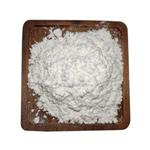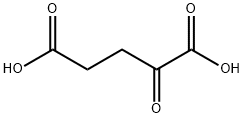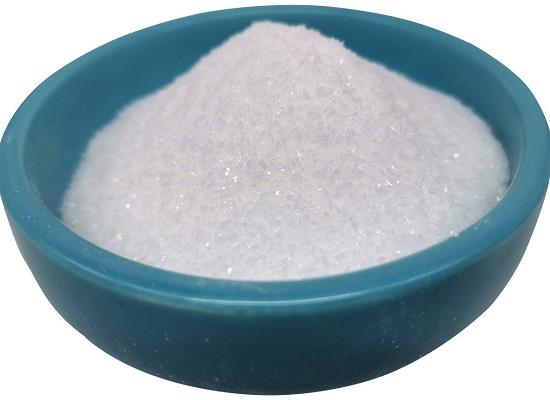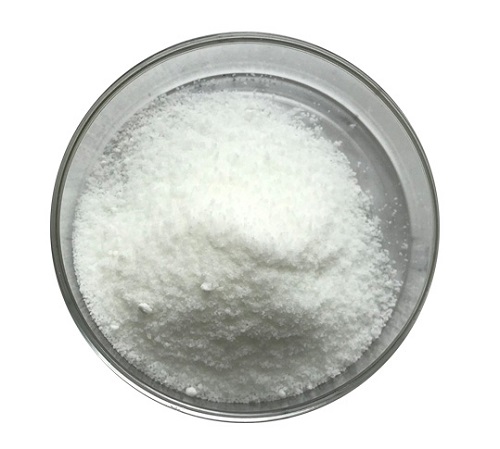Exploring 2-Ketoglutaric Acid's Role in Circulatory, Locomotion and Endocrine System
General Description
2-Ketoglutaric acid is an important intermediate metabolite with diverse clinical applications in various systems, including the circulatory, locomotion, and endocrine systems. Different metabolic pathways and fermentation techniques are employed for its synthesis, and research focuses on developing high-yield 2-Ketoglutaric acid-producing strains. In the circulatory system, 2-Ketoglutaric acid levels serve as an essential pathological detection index for various cardiovascular diseases and may indicate oxidative stress and hepatic ischemia-reperfusion injury. In the locomotion system, 2-Ketoglutaric acid promotes protein synthesis, enhances muscle function and bone cell differentiation, and holds potential for treating muscle-wasting and osteoporosis. In the endocrine system, 2-Ketoglutaric acid influences insulin secretion and modulates metabolic processes, potentially treating diabetes and obesity. Further experimental evidence is needed to fully elucidate 2-Ketoglutaric acid's clinical applications and biomarker potential in these systems.

Figure 1. 2-Ketoglutaric acid
Synthetic paths
2-Ketoglutaric acid is a vital intermediate metabolite in the tricarboxylic acid (TCA) cycle and plays crucial roles in the synthesis and energy metabolism of amino acids, vitamins, and organic acids. It finds extensive applications in medicine, food, animal husbandry, and agriculture. Synthetic paths for 2-Ketoglutaric acid mainly involve biosynthesis and fermentation. In the biosynthetic pathway, three key metabolic nodes are involved: the phosphoenolpyruvate-pyruvate-oxaloacetate node, the citric acid node, and the 2-Ketoglutaric acid node. Oxaloacetate serves as an important precursor for 2-Ketoglutaric acid synthesis, which can be obtained from the TCA cycle or through replenishment pathways involving pyruvate carboxylase and phosphoenolpyruvate carboxylase. Different microorganisms possess varying combinations of these carboxylases. The citrate node controls the metabolic flux of the TCA cycle, with citrate synthase being a key enzyme. Its activity is often regulated by citric acid, ATP, and NADP. 2-Ketoglutaric acid node determines the metabolic fate of 2-Ketoglutaric acid, with α-ketoglutarate dehydrogenase and glutamate dehydrogenase catalyzing its conversion to succinyl-CoA and glutamate, respectively. Thiamine serves as a coenzyme for α-ketoglutarate dehydrogenase. Fermentation has been utilized for 2-Ketoglutaric acid production, employing microorganisms such as Pseudomonas fluorescens, Corynebacterium glutamicum, Yarrowia lipolytica, and Saccharomyces glabrata. These organisms exhibit favorable physiological and genetic characteristics, facilitating 2-Ketoglutaric acid production. Current research focuses on enhancing 2-Ketoglutaric acid precursor supply and suppressing competitive metabolic pathways to breed high-yield 2-Ketoglutaric acid-producing strains. Overall, 2-Ketoglutaric acid synthesis involves complex metabolic pathways and fermentation techniques, with potential applications in various industries. 1
Clinical applications
Circulatory system
2-Ketoglutaric acid plays a crucial role in the circulatory system and has diverse clinical applications. Its levels in the blood are indicative of the conditions of vital organs and other systems, serving as a pathological detection index for various cardiovascular diseases. In clinical trials, 2-Ketoglutaric acid levels have been measured using liquid chromatography-mass spectrometry/mass spectrometry to assess its role in different conditions. Elevated 2-Ketoglutaric acid levels in the blood have been observed during hepatic encephalopathy, while decreased levels have been linked to diabetes. 2-Ketoglutaric acid serves as an antioxidant and shows promise in mitigating oxidative stress, suppressing Kupffer cell activation during liver transplantation, and attenuating hepatic ischemia-reperfusion injury. Furthermore, it may reflect the clinical severity of chronic heart failure in non-diabetic patients and indicate systolic dysfunction of the left ventricle. Additionally, 2-Ketoglutaric acid has demonstrated potential in improving myocardial hypertrophic remodeling and fibrosis in stress-overloaded hearts, as well as exhibiting antitumor potential due to its antioxidant activity. Overall, 2-Ketoglutaric acid levels in the circulatory system serve as an essential indicator for various organ conditions and hold promise for novel treatment options in cardiovascular protection and other pathological conditions. 2
Locomotion system
2-Ketoglutaric acid holds significant clinical applications in the locomotion system, particularly in skeletal muscle and bone health. 2-Ketoglutaric acid plays a crucial role in the anabolism of skeletal muscle by activating the mammalian target of rapamycin (mTOR) pathway, thereby improving protein metabolism and amino acid synthesis. Animal studies have shown that 2-Ketoglutaric acid supplementation on a low-protein diet enhances collagen expression, inhibits collagen degradation in fibroblasts, and promotes muscle protein synthesis. These findings suggest the potential use of 2-Ketoglutaric acid in muscle-wasting therapy. In terms of bone health, 2-Ketoglutaric acid activates signaling pathways like JNK and mTOR/S6K1/S6, independently of GPR99 activation, to promote osteoblast differentiation. 2-Ketoglutaric acid also increases serum proline levels and exhibits positive effects on bone structure and lumbar bone mass retention, making it beneficial for individuals with postmenopausal osteopenia. Additionally, 2-Ketoglutaric acid supplementation shows promise as a treatment method for children receiving synthetic glucocorticoid therapy, which can cause adverse effects like osteoporosis and growth retardation. Furthermore, 2-Ketoglutaric acid serves as an important supplement following surgical trauma by maintaining amino acid concentration, protein synthesis, and preventing the reduction of free glutamine often produced after surgery. Overall, the clinical applications of 2-Ketoglutaric acid in the locomotion system focus on promoting protein synthesis, enhancing muscle function, and supporting bone cell differentiation. 3
Endocrine system
2-Ketoglutaric acid has demonstrated promising clinical applications in the endocrine system, particularly in the context of diabetes and obesity. In patients with diabetes, 2-Ketoglutaric acid has been shown to influence insulin secretion in pancreatic islets, directly stimulating insulin release and impacting mitochondrial mechanisms involved in insulin synthesis. Furthermore, 2-Ketoglutaric acid has been associated with delayed diabetic wound healing and poor systemic blood sugar control, indicating its potential as a prognostic marker for complications related to diabetes. In the case of obesity, 2-Ketoglutaric acid plays a regulatory role in metabolic processes, affecting the differentiation and function of brown fat by modulating histone methylation through IDH1. Additionally, 2-Ketoglutaric acid has been linked to reducing fat inflammation and promoting TET-mediated DNA demethylation, potentially influencing the balance of M2 to M1 macrophages. Moreover, 2-Ketoglutaric acid has shown promise in attenuating signaling pathways associated with adipocyte inflammation. While current research has highlighted the potential of 2-Ketoglutaric acid in the endocrine system, further experimental evidence is needed to fully elucidate its clinical applications in treating diabetes and obesity. Continued investigation into the mechanisms of 2-Ketoglutaric acid's actions and its potential as a biomarker for endocrine-related diseases will be crucial for the development of effective treatment strategies in the future. 4
Reference
1. Gyanwali B, Lim ZX, Soh J, Lim C, Guan SP, Goh J, Maier AB, Kennedy BK. Alpha-Ketoglutarate dietary supplementation to improve health in humans. Trends Endocrinol Metab. 2022 Feb;33(2):136-146.
2. An D, Zeng Q, Zhang P, Ma Z, Zhang H, Liu Z, Li J, Ren H, Xu D. Alpha-ketoglutarate ameliorates pressure overload-induced chronic cardiac dysfunction in mice. Redox Biol. 2021 Oct;46:102088.
3. Cai X, Yuan Y, Liao Z, Xing K, Zhu C, Xu Y, Yu L, Wang L, Wang S, Zhu X, Gao P, Zhang Y, Jiang Q, Xu P, Shu G. α-Ketoglutarate prevents skeletal muscle protein degradation and muscle atrophy through PHD3/ADRB2 pathway. FASEB J. 2018 Jan;32(1):488-499.
4. Temneanu OR, Trandafir LM, Purcarea MR. Type 2 diabetes mellitus in children and adolescents: a relatively new clinical problem within pediatric practice. J Med Life. 2016 Jul-Sep;9(3):235-239.
Related articles And Qustion
Lastest Price from 2-Ketoglutaric acid manufacturers

US $10.00/ASSAYS2025-08-20
- CAS:
- 328-50-7
- Min. Order:
- 1ASSAYS
- Purity:
- 99%
- Supply Ability:
- 100kg

US $0.00/mg2025-06-06
- CAS:
- 328-50-7
- Min. Order:
- 1mg
- Purity:
- 99%
- Supply Ability:
- 100000T




